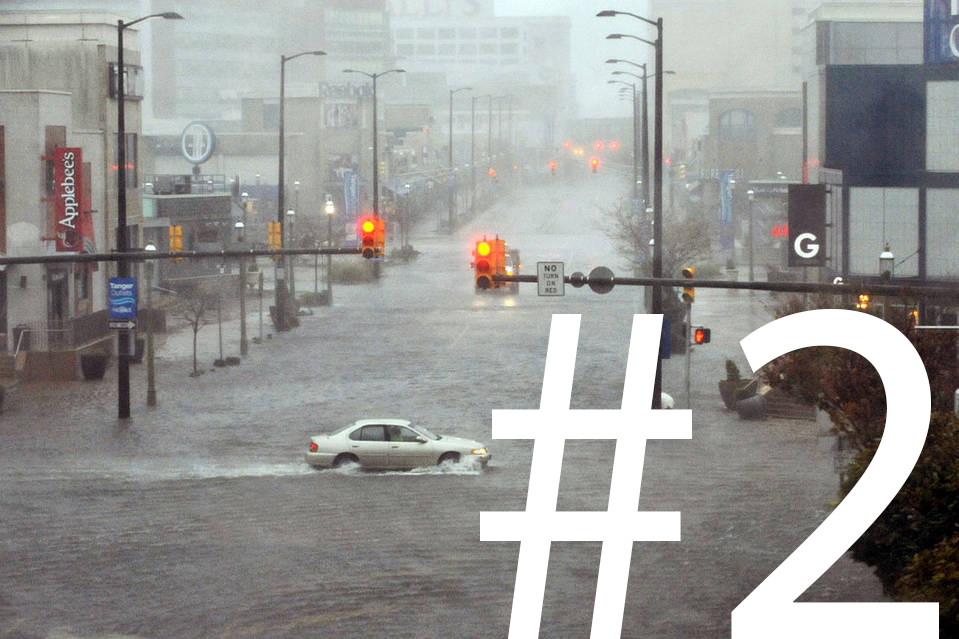This week HBLB launches its podcast: R&R, Risk and Reward with Emily Kaplan, where I’ll interview a range of people on how they’ve tackled risks in their lives.
Naturally, we especially liked this story this week, on how too much safety can create a much more risk and result in more dangerous situations.
From NPR’s On Point with Tom Ashbrook:
“Greg Ip is chief economics commentator for the Wall Street Journal, and here’s what catches his eye in our country lately: that the more we try to avoid risk, the more risk we may incur. We fight forest fires until forests are stuffed with kindling ready to blaze. We regulate banking and bankers go looking for riskier investments. We live next to flood defenses, and the floods overwhelm. You can’t make it foolproof. But is too much safety and stability our big American problem these days? This hour On Point, Greg Ip on safety and risk and American life now.”
From Ip’s piece in the WSJ:
What should we do? Eliminating any possibility of disaster would require an exodus from such prosperous places, just as eliminating any possibility of financial crisis would suffocate essential risk-taking. The answer is to make our cities as resilient as possible in the face of inevitable disasters. We need to find ways to let the elements run their course with as little damage as possible.
People have settled along floodplains since ancient times because that is where the soil is richest. Cities arose on rivers, coasts and natural harbors because they facilitate trade and commerce. Americans have been building levees since the 1700s to improve navigation and make the floodplain available for agriculture, industry and settlement.
But this had an unintended consequence, as Gilbert White, an obscure, 31-year-old government staff geographer, wrote in 1942 in his Ph.D. dissertation: “Floods are ‘acts of God,’ but flood losses are largely acts of man.” White’s description of the tendency to build more property near levees, because of the feeling of protection, became known as the “levee effect.” It applies with equal force to other countries where people have learned to live next to danger. It is why Japan built the Fukushima Daiichi and Daini nuclear power plants on the coast, protected (so they thought) by sea walls.
Our desire to live near water virtually guarantees that there will be more, even costlier Sandys around the world. The Great Miami Hurricane of 1926 struck when the area’s population had topped 100,000, causing $1 billion in damage (in 2011 dollars). Natural disaster researchers Roger Pielke Jr. and Christopher Landsea reckon that if it struck now, the bill would approach $200 billion.
The World Bank estimates that the share of the world’s population living in large cities exposed to tropical cyclones and earthquakes will rise from 11% in 2000 to 16% in 2050. Economic exposure will grow even more because of rising sea levels linked to a warmer climate, economic growth and urbanization.
In 2005, the 10 cities most economically exposed to coastal flooding—led by Miami, New York, New Orleans, Osaka-Kobe and Tokyo—accounted for 5% of world GDP. That is likely to grow to 9% by the 2070s as Guangzhou, Kolkata, Shanghai, Mumbai, Tianjin, Hong Kong and Bangkok join the list.
As for New York City, it has been courting disaster virtually ever since its founding. The areas of lower Manhattan inundated by Sandy correspond almost exactly to those parts reclaimed from the seas since 1609. Two Dutch water experts, Jeroen Aerts and Wouter Botzen, have calculated that in the past century, the value of buildings in New York’s hundred-year flood zone has risen from less than $1 billion to $18 billion (in constant 2009 dollars).
In the wake of Sandy, Mayor Michael Bloomberg asked Seth Pinsky,then the head of the city’s economic development arm, to determine how best to protect New York against the water. Climate change was clearly a motivation, but as Mr. Pinsky told me, the vulnerability would be there even without the changing climate. His approach was to consider a wide range of threats—water, wind, heat—and to figure out how to make the city more able to endure all of them. Beaches and sand dunes are being replenished to create natural storm-surge barriers, buildings are being reinforced to withstand floodwater, and their electrical and mechanical systems are being moved from basements to upper floors.
Many jurisdictions have bought up homes and businesses on riverbanks and replaced them with green space that can flood safely. One of the most ambitious is the “Room for the River” project in the Netherlands. It involves demolishing protective dikes for some low-lying land and either moving residents or relocating them to higher ground, so that the original floodplain can fill up and spare downstream cities.
If you had predicted in 2000 that, in the 12 years ahead, New York would suffer a devastating terrorist attack that brought down its tallest skyscrapers, a financial crisis that toppled some of Wall Street’s most powerful firms and then a hurricane that put huge sections of the city underwater, what would you have predicted would happen to the city’s population? Probably not that it would grow by more than 400,000. That people keep flocking to New York, despite these calamities, illustrates the extraordinary pull of the city and its waterfront locale.
Someday, New York will be hit by another Sandy, and chances are that it will be more costly than the last—not because the city failed, but because it succeeded at making even more people feel safe long enough to prosper.
—Mr. Ip is the Journal’s chief economics commentator. This essay is adapted from his new book, “Foolproof: Why Safety Can Be Dangerous and How Danger Makes Us Safe,” to be published by Little, Brown on Oct. 13.






